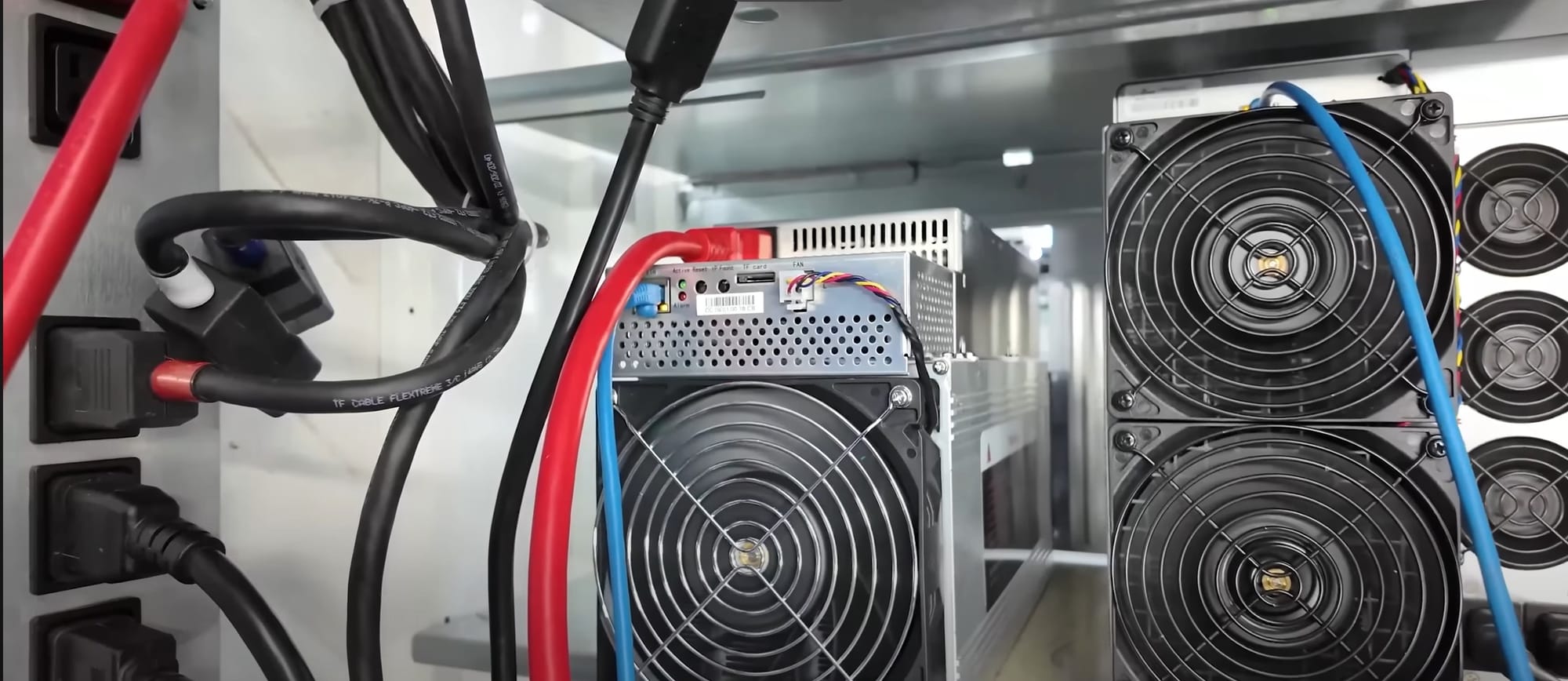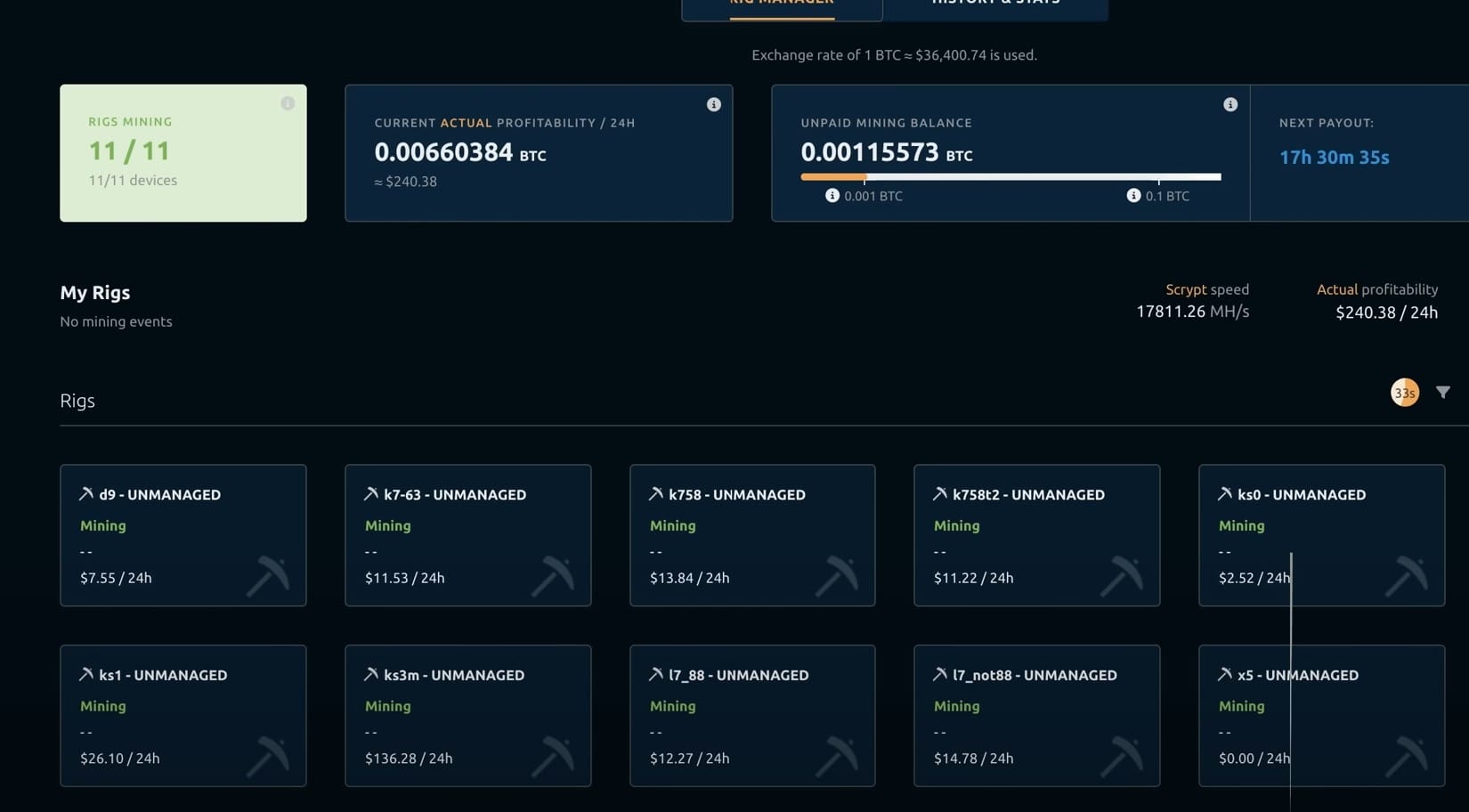What is the Most Energy-Efficient Mining Hardware?
Looking to mine smarter, not harder? This guide reveals the most energy-efficient mining hardware in 2025, including top rigs, setup tips, and expert advice to reduce power consumption and maximize returns.

The crypto mining world is no longer just about speed. In 2025, it’s also about energy efficiency. Every extra watt your machine uses can eat into your profits and push up your monthly bills.
Finding the most energy-efficient mining hardware is now essential, not optional. Electricity rates are rising across India and globally, and miners need rigs that deliver maximum hash power without draining their wallets.
And there's another reason—green mining. The global push toward sustainability means more miners are looking for eco-friendly hardware. If your rig burns less energy, it also leaves a smaller carbon footprint.
In this guide, we’ll break down the top performers for low energy usage. You’ll learn how to identify energy-efficient ASIC miners that fit your budget. We’ll also show you how small upgrades can reduce electricity costs significantly.
So, if you're serious about crypto mining in 2025, it's time to look beyond just hash rates. Let’s find out what counts as the most energy-efficient mining hardware and how to make your setup future-ready.
Why Energy Efficiency Matters in Crypto Mining
Every miner knows that electricity costs can make or break a mining setup. In countries where power rates vary state by state, running inefficient machines can drain profits fast. That’s why choosing the most energy-efficient mining hardware matters more than ever. It’s not just about how many coins you can mine, but how much energy each coin costs you.
Let’s say two rigs produce similar hash rates. But one uses 30% less power. Over a year, that difference could mean thousands saved on your electricity bill. And those savings add up—especially in competitive mining environments.
But it's not only about profit. More miners are now choosing eco-conscious mining rigs to reduce their carbon footprint. With global pressure to go green, using low-power consumption hardware gives you an edge.
Plus, energy-efficient rigs run cooler and require less maintenance. They also generate less heat, which means you spend less on cooling systems—another hidden cost in mining operations.
Sustainable mining isn't just a buzzword. It’s becoming a standard. Investors and mining pools are beginning to prioritize operations that use energy-efficient ASIC miners over power-hungry setups.
In short, focusing on the most energy-efficient mining hardware improves both your ROI and your reputation. And as the industry evolves, these two things matter more than ever.
Top 5 Energy-Efficient Mining Rigs in 2025

Selecting the most energy-efficient mining hardware is crucial for maximizing profitability and reducing environmental impact.
- Hash Rate: Higher hash rates increase the likelihood of mining success.
- Power Consumption: Lower power usage reduces electricity costs and environmental impact.
- Efficiency: Measured in joules per terahash (J/TH), lower values indicate better energy efficiency.
Below are five standout mining rigs in 2025 known for their exceptional energy efficiency:
1. Bitmain Antminer S21 Pro
- Hash Rate: 250 TH/s
- Power Consumption: 2,000W
- Efficiency: 8 J/TH
The Antminer S21 Pro leads the market with its groundbreaking 5nm chip technology, offering unmatched energy efficiency. Its advanced cooling system and smart monitoring features make it ideal for professional miners seeking high returns.
2. MicroBT WhatsMiner M70
- Hash Rate: 200 TH/s
- Power Consumption: 1,850W
- Efficiency: 9.25 J/TH
The WhatsMiner M70 is renowned for its balance between performance and energy consumption. Its robust build and efficient cooling mechanisms ensure stable operation, making it a preferred choice for miners aiming to optimize energy use.
3. Canaan Avalon A1366
- Hash Rate: 155 TH/s
- Power Consumption: 3,250W
- Efficiency: 20.96 J/TH
The Avalon A1366 offers reliability and efficiency for mid-tier Bitcoin mining setups. Its user-friendly interface and durable design make it suitable for miners seeking a dependable, energy-conscious option. citeturn0search9
4. iPollo G2 Mini
- Hash Rate: 70 TH/s
- Power Consumption: 850W
- Efficiency: 12.14 J/TH
Ideal for small-scale operations, the iPollo G2 Mini provides a cost-effective entry into mining. Its compact design and low power requirements make it suitable for miners with limited space and budget.
5. Goldshell KD Max Pro
- Hash Rate: 240 TH/s
- Power Consumption: 2,800W
- Efficiency: 11.67 J/TH
The Goldshell KD Max Pro stands out for its high hash rate and energy efficiency. Its innovative features cater to miners focusing on profitability while maintaining a lower environmental footprint.
How to Optimize Your Mining Rig for Energy Efficiency

Achieving optimal energy efficiency in crypto mining involves more than selecting the most energy-efficient mining hardware. Implementing strategic practices can further enhance performance and reduce operational costs. Here's how to optimize your mining rig for better energy efficiency:
1. Optimize Hardware Settings
Fine-tuning your mining hardware can lead to significant energy savings:
- Adjust Power Limits: Lowering the power limit of your mining devices can reduce energy consumption with minimal impact on performance.
- Underclocking and Undervolting: Reducing the clock speeds and voltage of your GPUs or ASICs decreases power usage and heat generation, enhancing overall efficiency.
2. Implement Effective Cooling Solutions
Proper cooling maintains optimal operating temperatures, preventing overheating and reducing the need for excessive fan usage:
- Enhance Airflow: Arrange your mining rigs to promote natural airflow and consider using additional fans to dissipate heat effectively.
- Liquid Cooling Systems: For larger operations, liquid cooling can be more efficient than air cooling, though it requires a higher initial investment.
3. Utilize Renewable Energy Sources
Powering your mining operations with renewable energy can significantly cut electricity costs and reduce environmental impact:
- Solar and Wind Energy: Investing in solar panels or wind turbines can provide a sustainable and cost-effective power source for your mining activities.
- Energy Storage Solutions: Implementing battery storage systems allows you to store excess energy generated during peak production times for use during periods of low generation.
4. Regular Maintenance and Monitoring
Keeping your mining equipment in top condition ensures sustained energy efficiency:
- Routine Cleaning: Dust and debris can obstruct airflow and insulate heat. Regularly clean your hardware components to maintain effective cooling.
- Firmware Updates: Stay updated with the latest firmware releases to benefit from performance enhancements and security patches.
- Performance Monitoring: Use monitoring tools to track hash rates, power consumption, and temperature, enabling prompt identification and resolution of inefficiencies.
Conclusion
Selecting the most energy-efficient mining hardware is crucial for enhancing profitability and promoting sustainable mining practices. By investing in energy-efficient ASIC miners, miners can significantly reduce electricity costs, which constitute a substantial portion of operational expenses. This reduction not only boosts financial returns but also minimizes the environmental impact associated with high energy consumption.
The mining rigs highlighted in this guide exemplify the advancements in eco-friendly mining hardware, offering high hash rates while maintaining low power consumption. Implementing optimization strategies, such as fine-tuning hardware settings, adopting effective cooling solutions, and utilizing renewable energy sources, further enhances energy efficiency.
As the cryptocurrency mining landscape evolves, prioritizing energy efficiency becomes increasingly important. By focusing on sustainable practices and leveraging the latest in energy-efficient technology, miners can achieve long-term success in this competitive industry.
FAQs
How does energy efficiency impact the lifespan of mining hardware?
Energy-efficient mining hardware typically operates at lower temperatures due to reduced power consumption. This decrease in heat generation can lead to less thermal stress on components, potentially extending the hardware's operational lifespan.
Are there software tools available to monitor and improve mining energy efficiency?
Yes, several software solutions allow miners to monitor real-time energy consumption and optimize performance. These tools can adjust power settings, manage workloads, and provide analytics to enhance overall energy efficiency.
What role does ambient temperature play in mining hardware energy efficiency?
Ambient temperature significantly affects mining hardware performance. Operating in cooler environments can reduce the need for extensive cooling systems, thereby enhancing energy efficiency. Conversely, higher ambient temperatures may require additional cooling, increasing energy consumption.
How do mining hardware manufacturers address energy efficiency in their designs?
Manufacturers are increasingly focusing on energy efficiency by incorporating advanced technologies such as AI-enhanced algorithms and immersion cooling systems. These innovations aim to optimize performance while minimizing power consumption, aligning with the industry's shift towards sustainable mining practices.




